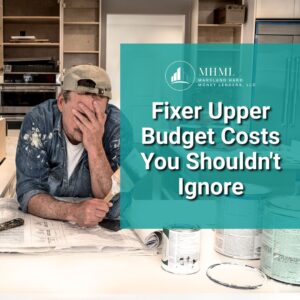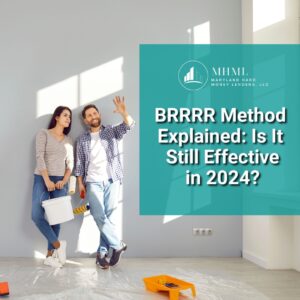The 70% Rule in Real Estate Home Flips: A Money-Saving Strategy
Home flips can be wildly profitable, but only if you play your cards right. The entire process is a precariously delicate balance. If you overlook one calculation or detail, you can find yourself in shambles. After all, many people don’t budget their flip properly. leaving them deep in debt.
 That’s why the house flipping community stands by the 70% rule. The 70% rule in real estate shows you the maximum amount you should spend on distressed properties to reduce risk and secure profits.
That’s why the house flipping community stands by the 70% rule. The 70% rule in real estate shows you the maximum amount you should spend on distressed properties to reduce risk and secure profits.
Table of Contents
- What is the 70% Rule in Real Estate?
- Formula Examples
- Why is the 70% Rule for Home Flips Critical?
- Applications in Real Estate Investing
What Is the 70% Rule in Real Estate?
The 70% rule in real estate helps you calculate the maximum amount you should buy for the property you want to use for a home flip. In essence, the 70 percent rule dictates that you should avoid buying a distressed property for over 70 percent of the property’s after-repair value (ARV). This adds up to how much you estimate the home will sell for after you flip it, not including repair costs.
(After-Repair Value x 0.7) – total repair cost = maximum purchase amount
 This classic rule of thumb helps real estate investors assess how much money they can put in a home flip and still earn an ROI. The hard money lenders in Maryland can teach you this essential step in the house flipping journey.
This classic rule of thumb helps real estate investors assess how much money they can put in a home flip and still earn an ROI. The hard money lenders in Maryland can teach you this essential step in the house flipping journey.
Formula Examples
For instance, if a property costs $150,000 and requires $20,000 in repair expenses, the 70% rule shows investors should pay a maximum of $85,000. The math looks like this:
$150,000 (ARV) x .70 (ARV percentage) = $105,000
$105,000 – $20,000 (ERC) = $85,000 (buying price)
To put it another way, the formula is straightforward. Once you calculate the ARV and ERC, you can write in the numbers.
Real estate investors often use this formula to decide how much they should pay for properties.
For another example, look at a house with an ARV of $100,000 and $20,000 rehab fees. The last variable you need to determine is the right discount you should buy at. Here, we’ll apply the conventional 70% rule, so 0.7 is entered in.
Formula: (ARV * 0.7) – rehab
Example: ($100,000 * 0.7) = $50,000
Why Is The 70% Rule for Home Flips Critical?
This math formula is essential because real estate investors use key tools, ARV and rehab expenses, together to calculate them. Furthermore, if one or both numbers are inaccurate, you could find yourself working with unideal margins. Also, if you calculate the incorrect price, it can reduce or even eviscerate your profit margins.
As a rule, your investment exit strategy should define your fixed ARV and rehab costs. However, the ARV percentage amount, subtracting repairs, should be variable. In addition, house flipping investors may stop using this rule as they become more experienced and able to think outside the box.
For example, if home flip investors plan to purchase the property, put it on a long-term hold, and bet on appreciation, they might have the wiggle room to pay extra. Should this happen while financing is good and the location is desirable, investors may even be able to buy at 101% ARV.
Applications in Real Estate Investing
There are many factors that impact how you apply the 70% rule. These can include the housing inventory price point, major market area, and exit strategy. Here’s how you can integrate the 70% rule into various parts of your strategizing.
Housing Inventory Price Point
Real estate investors can alter the 70% rule, depending on the housing inventory’s price point. As one example, when you purchase lower-end housing in Texas with a $70,000 to $90,000 ARV, you may be able to bargain for a bigger discount, like 65%.
 You can best get a feel for the local market by reviewing recent cash sales in your property’s community. This will give you an idea of the margins everyone else works with for house flips.
You can best get a feel for the local market by reviewing recent cash sales in your property’s community. This will give you an idea of the margins everyone else works with for house flips.
On the other hand, if your exit strategy is wholesaling, such analyses will show how much of a discount you need for your purchase.
Major Market Area
Core market areas may have their own nuances that influence your formula. So, naturally, you must alter your formula based on your chosen market.
More critically, you should zoom in on the property’s inherent local attributes. The ARV percentage will fluctuate from ZIP code to ZIP code, subdivision to subdivision, even as you look at the same major market sector.
Exit Strategy
Your exit strategy will change your usage of the 70% rule. For instance, home flips require more costs for renovations, loans, agent fees, and other expenses.
Determining After-Repair Value
If you want the 70% rule to work as intended, you must start with an educated guess about your property’s after-repair value.
 In addition, unless you can somehow calculate repair costs in your head, you may benefit from professional assistance. Home inspectors can help you estimate the sum of repair costs. They can examine your house and pinpoint its problems, from small leaks to entire roof replacements. Also, they can let you know of any pest issues, foundation cracks, and more.
In addition, unless you can somehow calculate repair costs in your head, you may benefit from professional assistance. Home inspectors can help you estimate the sum of repair costs. They can examine your house and pinpoint its problems, from small leaks to entire roof replacements. Also, they can let you know of any pest issues, foundation cracks, and more.
With this home inspection report, you can estimate the cost of the repairs necessary for your house flip. You may want to get estimates from professional plumbers, roofers, electricians, or websites that calculate these costs for you.
If you want to approximate how much you can sell your property for, you can ask your lending partner for guidance. They have worked with many flippers like you and have developed a knowledge of their market.
The above advice holds especially true if the lender is directly located in their market area, which immerses them in the unique subtleties of their specific real estate market. For instance, they may have special intel on similar properties’ selling rates in the neighborhood. In turn, this can further help you cinch your ARV.
Enhance Your ROI with MHML
The 70% rule in real estate is indispensable. It gives you a ballpark of your investing danger zone, at which point you could wind up in the red. With this tried-and-true rule, you can crunch the data to give you more control over your home flip investment experience from top to bottom.
If you want to be extra sure that you will achieve an ROI on your house flip, you should work with real estate professionals with a proven track record. The team at Maryland Hard Money Lenders has over 15 years of experience as a pivotal team member in various real estate projects. We can give you the resources you need to fund your home flip quickly, oftentimes within weeks. Contact us today to get one step closer to profits.



